

|


|
Tamiya Mercedes-Benz Unimog 406 Series U900 - RTR - 23662
|
Released by Tamiya on December 17, 2008, the Mercedes-Benz Unimog 406 Series U900 (Yellow) (# 23662) was the Factory Finished, Limited Edition, RTR version of the Mercedes-Benz Unimog 406 Series U900 kit (#58414), based on the 4WD CR-01 Rock Crawler Chassis.
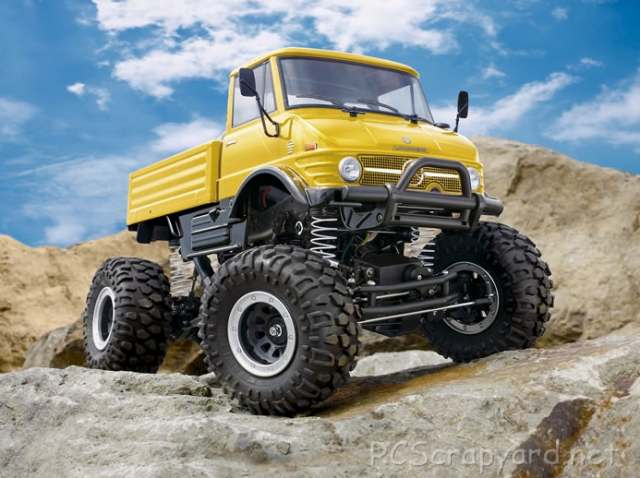
The ladder framed CR-01 chassis, employs two metal side bars, jointed by a number of fixed and pivoted ties and struts to allow it to twist and flex. Two bevel gear type differentials enclosed in tough plastic axle housings are employed with a third orbital gear differential mounted in the centrally positioned gearbox with the 540 motor. Two universal drive prop shafts link the axle drives to provide excellent controlled handling.
The suspension uses four oil filled dampers set at 45 degrees and four coil springs separately mounted behind each wheel.
Four huge 125mm tires are perfect to traverse all types of rough and rocky terrain with ease. In my opinion this is one of the best Tamiya Radio Controlled model designs to date.








|
|
|

|
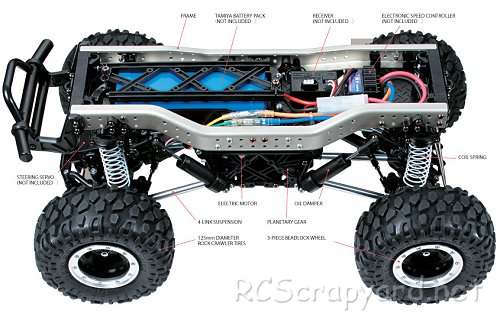
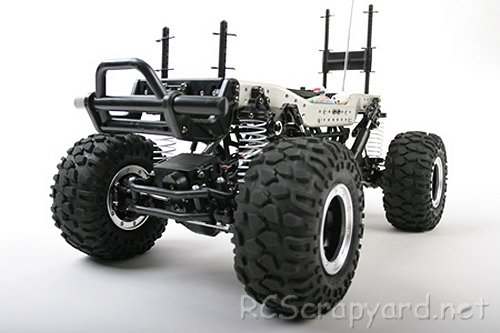
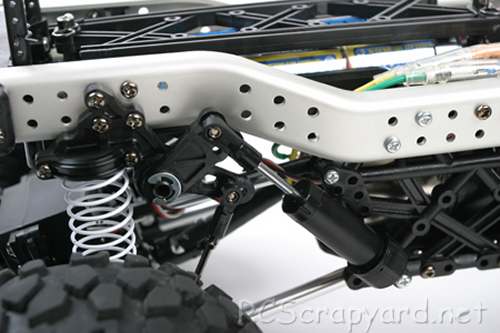
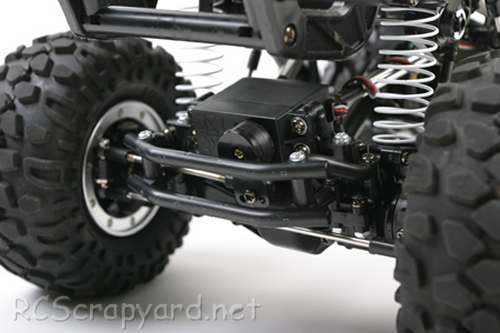
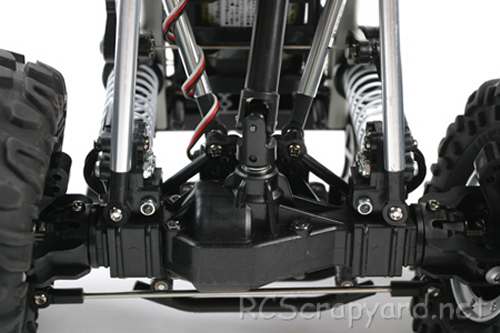
Buying a Used Tamiya Rock Crawler (and What to look for)
Make a General Visual Inspection
Check the Body-Shell
If the body shell of your Rock Crawler is broken, ripped or damaged in any way, this can be easily repaired with rubber solution glue. Also, for added protection and if available for your model, fit an under guard to stop dirt and gravel entering the chassis. Drive Shafts and Turnbuckles
Examine the Drive System
The gearbox of your used Rock Crawler should be opened up to check for damaged gears and wear. If there is excessive backlash in the gearing, these should be replaced. A thin coat of grease on the gears is enough to allow smooth operation and reduce further wear. Pinions and Spur Gears
Steering Servo and Servo-Saver
Don't Forget those Bearings
|









|






|
|
|
|
Hints, Tips and Information How to Charge Rechargeable Batteries for Peak PerformanceNi-Cad (Nickel Cadmium) Batteries
1/ All Ni-Cad Batteries have to be Discharged soon after use. This is to avoid the dreaded "Memory" effect that on subsequent re-charges can cause a momentary drop in performance during a race. A simple discharger can be made from a car 12v bulb.
Ni-Mh (Nickel Metal Hydride) Batteries
1/ Never charge Ni-Mh batteries at a current higher than 4.5 amps. Although these batteries can give a higher voltage than Ni-Cad Batteries, they are much more sensitive and easy to damage if charged too quickly. |
|
Hints, Tips and Information
Bearing Seals
If you were to ask anyone with a modicum of experience in RC, they will tell you that the best modification you can make to a basic RC model, is to add a set of ball bearings. |
|
RC Models:
|
Radio & Motors: |
Other
Accessories: |